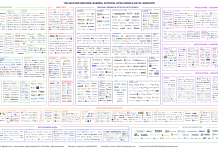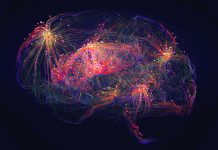A recent study by Cedars-Sinai has provided valuable insights into how artificial intelligence (AI) and physicians perform in virtual urgent care settings
The study, presented at the American College of Physicians Internal Medicine Meeting and published in the Annals of Internal Medicine, found that while AI and physicians bring unique strengths, they each excel in different areas regarding treatment recommendations.
The rise of AI in urgent care
The study focused on using AI in Cedars-Sinai’s virtual urgent care program, Cedars-Sinai Connect, which was designed to expand access to healthcare for patients in California.
This mobile app allows patients to easily consult with medical professionals for various concerns, from acute issues like respiratory symptoms to chronic and preventive care.
During the study period, from June to July 2024, 461 physician-managed visits with AI recommendations were analysed, involving patients with common urgent care complaints such as respiratory, urinary, and dental symptoms.
Using AI for early diagnosis and treatment recommendations
In the virtual care setting, patients initially input their symptoms into the app, which triggers a dynamic AI-driven interview.
The AI collects data on symptoms and medical history, often asking patients around 25 questions in just five minutes. Using this information, the system generates potential diagnoses and treatment recommendations.
These AI suggestions are then presented to the attending physician, who can choose whether to integrate them into their clinical decision-making.
AI and human expertise
AI was particularly effective in flagging critical medical conditions, especially in detecting cases that might involve antibiotic-resistant bacteria in urinary tract infections.
For example, AI suggested further testing before medications were prescribed. The study found that AI’s ability to quickly and accurately identify these red flags led to higher-rated treatment recommendations than physicians’ final decisions.
However, the study also found that physicians excelled in areas that AI could not fully replicate. While AI was skilled at identifying medical risks and suggesting appropriate tests or treatments, physicians were better at gathering a comprehensive medical history from patients.
They also demonstrated a greater ability to adapt their recommendations based on each patient’s individual circumstances and needs. This human element of care, including the capacity for empathy and nuanced decision-making, was something AI could not match.
The future of AI in healthcare
This research underscores the potential of AI to improve clinical decision-making, particularly when used as a tool to support physicians in real-time. However, it also emphasises the value of human expertise, especially in situations that require personalised care and judgment.
The findings suggest that when AI is used effectively, it can enhance healthcare delivery, particularly for common and acute conditions, by flagging issues that might go unnoticed and ensuring patients receive the right care quickly.
K Health developed the AI system powering Cedars-Sinai Connect. This technology company aims to reduce the administrative burdens on healthcare providers, allowing them to focus more on patient care. The collaboration between K Health and Cedars-Sinai is a step toward creating an integrated approach to healthcare where AI and human expertise work together to improve patient outcomes.
As virtual care continues to expand, studies like this provide important insights into how technology can complement, rather than replace, the vital role of healthcare providers. With the growing use of AI in medical settings, these findings could pave the way for more effective, personalised care in virtual environments.











